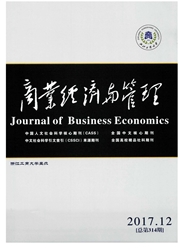

 中文摘要:
中文摘要:
利用2000—2012年30个省份的面板数据,实证分析了新型城镇化对经济增长的时空效应及其传导路径。研究结果表明:在控制消费、投资和产业结构升级三个变量的条件下,时间维度上新型城镇化对经济增长具有显著的正向影响,空间维度上对全国和东部地区具有显著正向促进作用,而对中西部地区的经济增长效应系数为正却不显著;接着分析了中西部地区新型城镇化对经济增长的三条潜在传导路径,根据测算的路径强度,发现消费路径和投资路径是新型城镇化推动经济增长的主要途径,但产业结构升级路径对经济增长存在阻碍作用,说明在中西部地区新型城镇化通过产业结构升级来有力推进经济增长还有待时日。
 英文摘要:
英文摘要:
Based on the panel data of 30 provinces regions for 2000-2012, this paper empirically analyzes the spatiotemporal effect of new urbanization on economic growth and its conduct path. Results show that new urbanization always has a significant positive impact on economic growth in time dimension, and in spatial dimension it has a significant positive impact in national and eastern regions, while in the central and western regions it has positive coefficient but not significant, when controlling for consumption, investment and the industrial structure upgrading. Then this paper analyzes the three potential paths of new urbanization on economic growth in the central and western regions. Based on path intensity, we find that the consumption and investment paths of new urbanization are the main route to promoting economic growth. However, the path of the industrial structure upgrading hinders the economic growth, which indicates that industrial structure upgrading path of new urbanization strongly promoting economic growth still remains to be seen in the central and western regions.
 同期刊论文项目
同期刊论文项目
 同项目期刊论文
同项目期刊论文
 期刊信息
期刊信息
